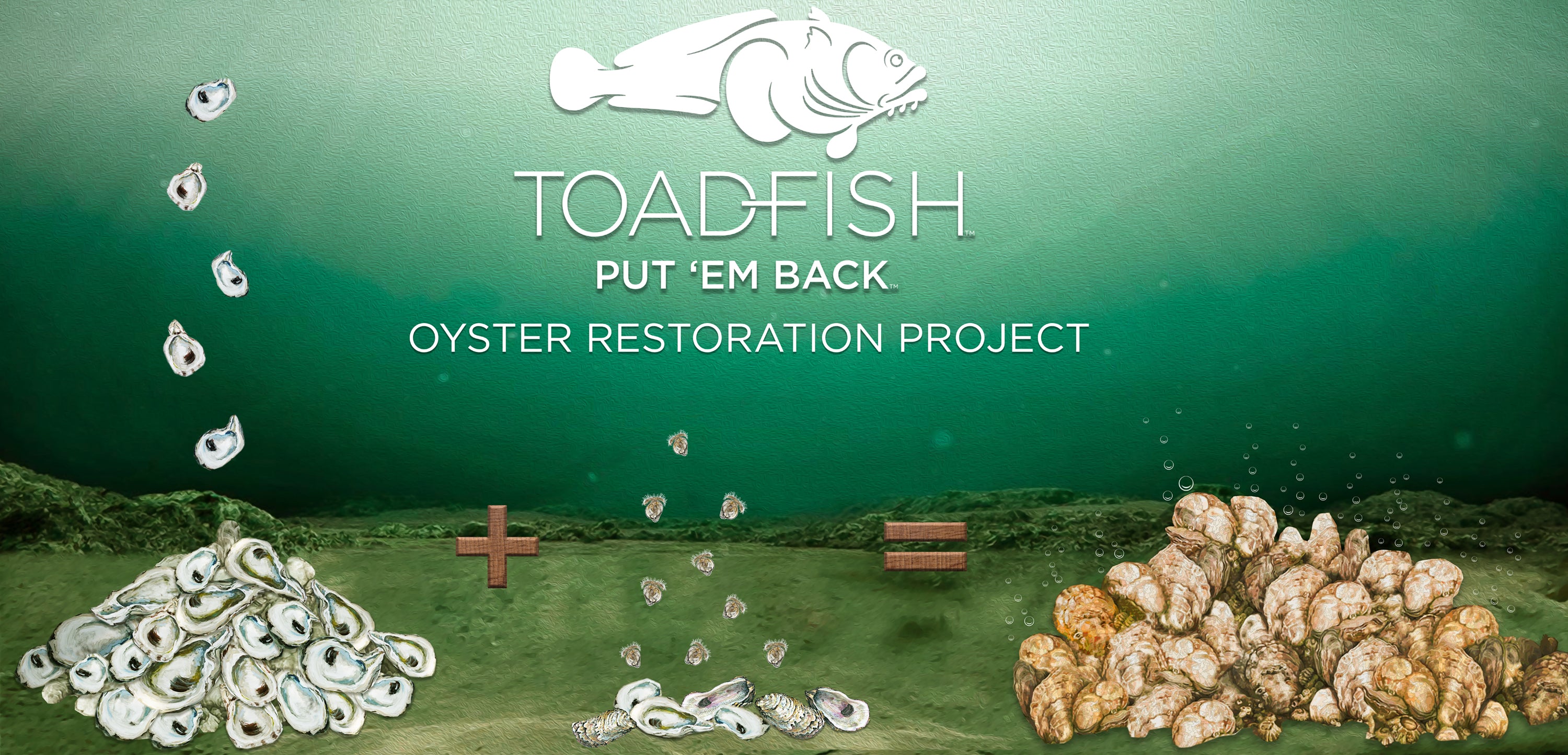How It Works
Reclaimed oyster shells are put back into the water near existing live oyster reefs. When the live oysters spawn their larvae, otherwise known as “spat”, it attaches to the existing shells and form new reefs. Without old shells to attach to, the oyster spat floats out to sea and misses the opportunity to form new habitat.


Put Em’ Back
Many coastlines are completely void of native oyster populations. In those areas, reclaimed shells are bagged and placed in large tanks where live oyster larvea are manually added to the shells before they are put back to form new reefs.
What Our Funds Are Used For
All funds collected go towards purchasing shells and supporting oyster shell recycling programs nationwide. Additionally, we purchase live oyster ‘spat’ to help create new oyster reefs.
“With our latest fundraising event: Shellabration, we raised funds to help clean the Charleston Harbor, which has some of the poorest water quality in the state of South Carolina. The event was a celebration of Lowcountry living at its finest, while giving back to preserve the saltwater lifestyle and culture we love.”
–Casey Davidson, President TCC


How We do It
We place new reefs in protected coastal areas. We work with other nonprofits and government agencies to restore oyster beds throughout the coastal United States.
Let's clean up our waterways
Help us revitalize this amazing water system so that future generations can enjoy it just as much as we do.

Oyster FAQ’S
-
Q: Why are oysters so vital to coastal ecosystems?
Oysters filter the water removing organic and inorganic particles from the water, which results in cleaner water which positively impacts other species and the ecosystem as a whole. Also oysters are considered a keystone species, they provide refuge for other marine species and their young, from predators.
-
Q: How many gallons of water can a single oyster filter per day?
1 single oyster can filter up to 50 gallons of water, per day!
-
Q: Why is it so important to put shucked oyster shells back into the ecosystem?
After an oyster spawns the spat are free floating organisms that need a hard surface to attach to in order to grow. When an oyster attaches to another oyster shell, the oyster has a better chance of growing faster and healthier due to the high levels of calcium found in oyster shells.
-
Q: Can you just throw the shells back in the water after an oyster roast?
Placing recently shucked oyster shells in the water can create environmental problems and may harm local oysters or other animals. To avoid contamination, the shells should be taken to a oyster recycling center or their designated drop off centers. The oyster recycling agency will then properly quarantine them for somewhere around 6 months.
